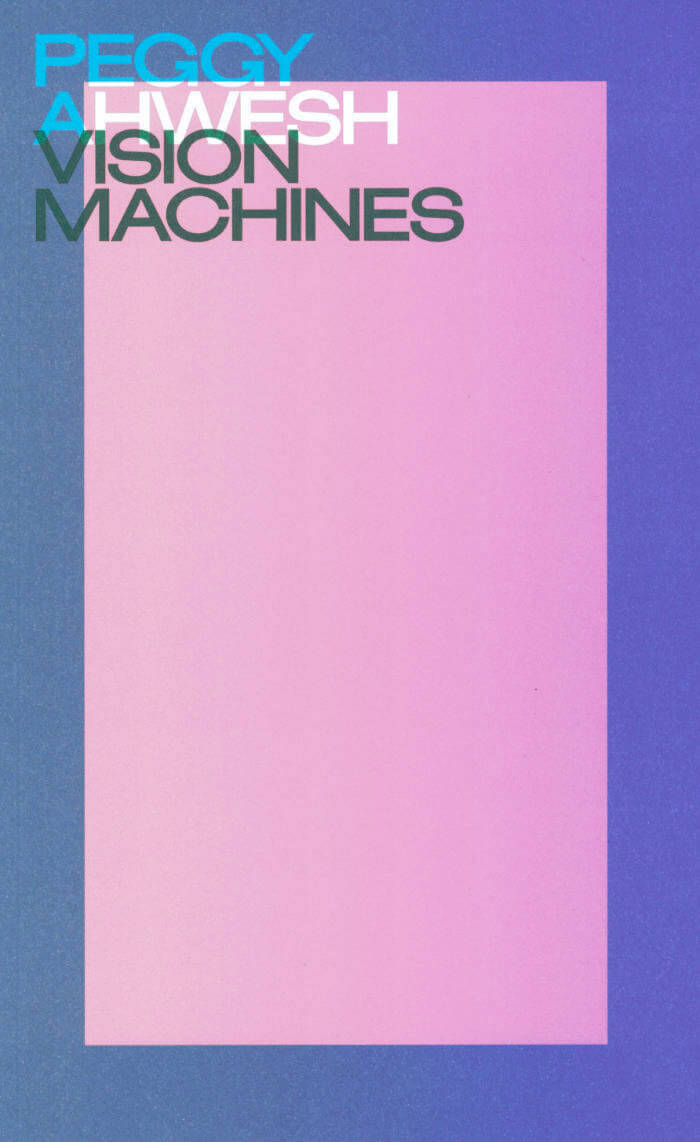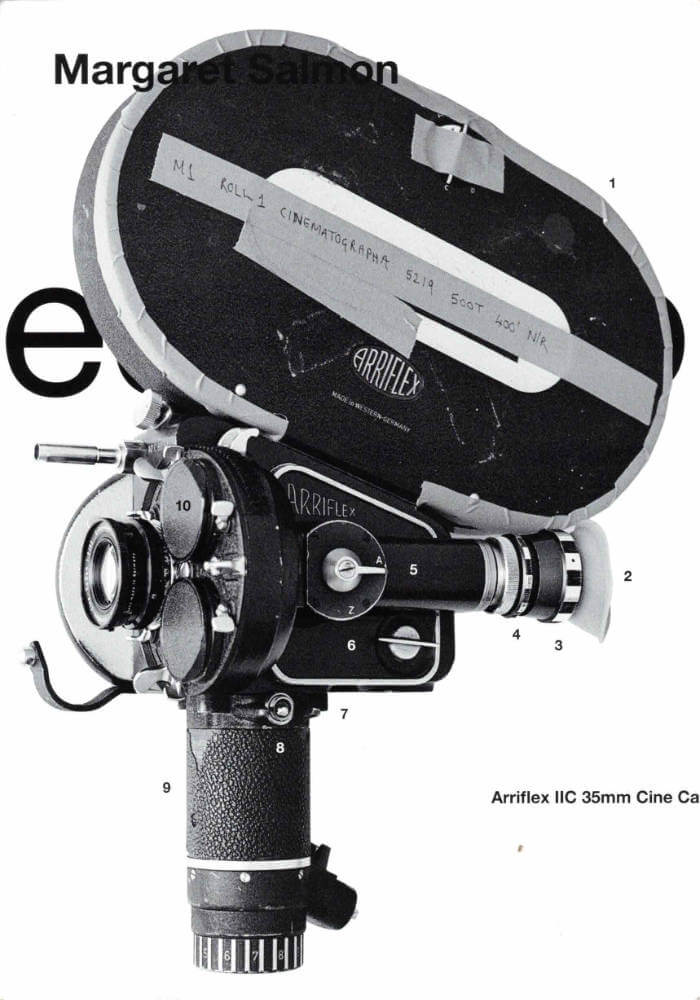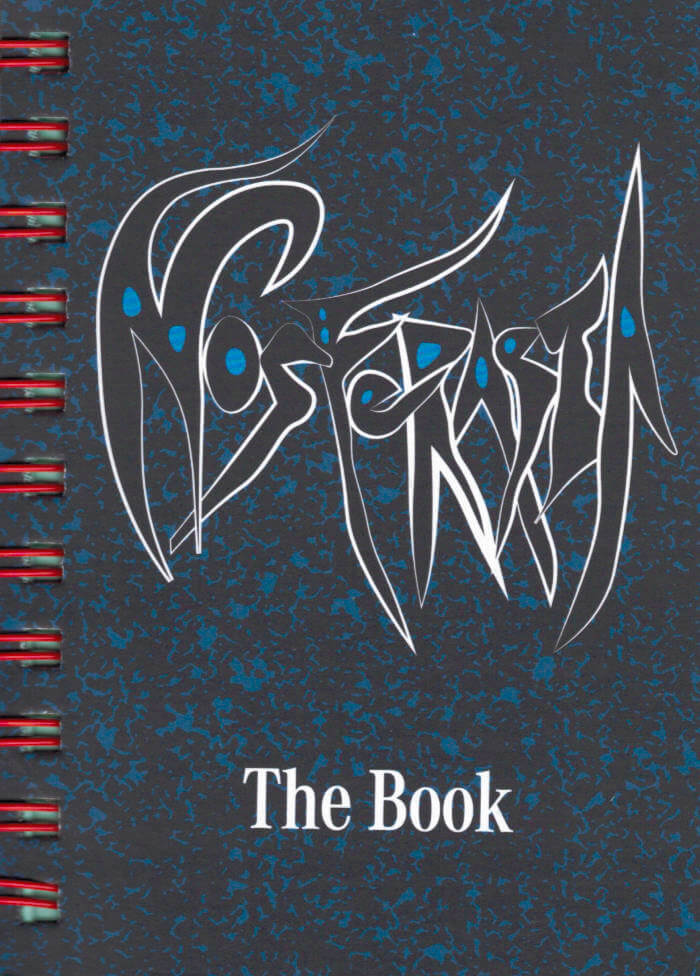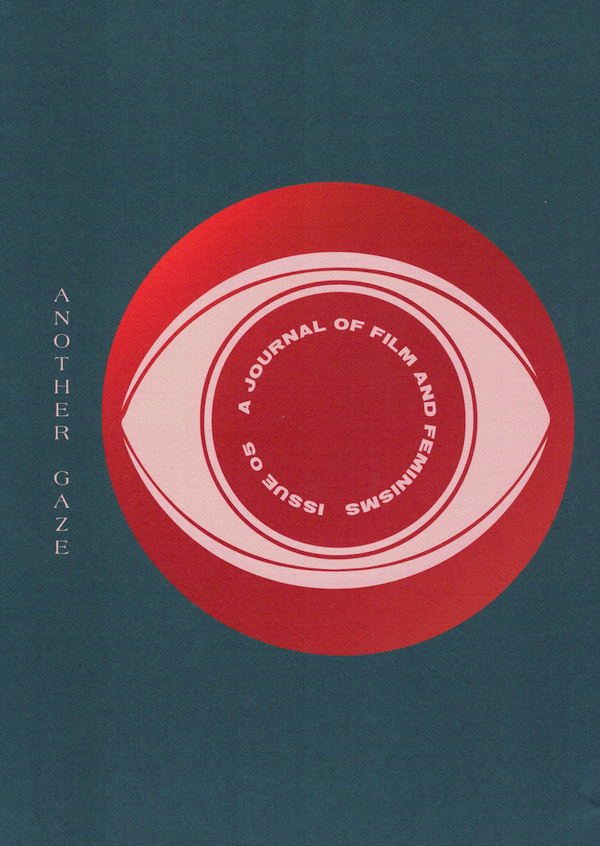Peggy Ahwesh
Peggy Ahwesh

Vision Machines
Over the last four decades, American artist and filmmaker Peggy Ahwesh has forged a distinctive moving image practice in the ruins of originality and authority. monWith contributions from Erika Balsom, Elena Gorfinkel, Tendai Mutambu, John David Rhodes and Shola von Rheinold, Peggy Ahwesh: Vision Machines explores how she has extended and contested the paradigm of experimental cinema.
Since the early 1980s, Peggy Ahwesh (born 1954 in Canonsburg, Pennsylvania) has produced one of the most heterogeneous bodies of work in the field of experimental film and video. A true bricoleur, her tools include narrative and documentary styles, improvised performance and scripted dialogue, synch-sound film, found footage, digital animation, and crude Pixelvision video. The work is primarily an investigation cultural identity and the role of the subject, in various genres. Ahwesh work with subversively amateur forms, and also a discourse that yielded traditionally female-gendered themes like home and family, relationships, and confessions, which she appropriated as scenarios. Her practice insists on political and social topicality, handled with theoretical and formal rigor, with a nod to popular culture forms. She draws the audience into the world and traditions of avant-garde film and video, where, as she has remarked, "there's nothing to prove and no money to make," only the pleasures of the text.
And more

Cinematographa
Conceived by artist and filmmaker Margaret Salmon, this publication is a tribute to a group of innovative sister cinematographas and to the analogue motion picture camera. The book pairs an enquiry into women’s filmmaking practice with a comprehensive survey of experimental analogue technique across generations.
Nine filmmakers – Peggy Ahwesh, Betzy Bromberg, Rose Lowder, Babette Mangolte, Rhea Storr, Deborah Stratman, Alia Syed, Malena Szlam and Salmon herself, speak about the ways they use and think about their cameras, sharing technical knowledge and reflections on camera work to reveal their creative philosophies and intentions.
Included with the book is a separate manual: “An Artists' Guide to Analogue Cinematography”. This learning pamphlet was written and photographed by Salmon, and includes step by step instructions to the loading and basic use of three cine cameras.
Texts: Peggy Ahwesh, Betzy Bromberg, Rose Lowder, Babette Mangolte, Margaret Salmon, Rhea Storr, Deborah Stratman, Alia Syed, Malena Szlam

Nosferasta: The Book
Marking the first UK commission by Brooklyn-based filmmakers Adam Khalil and Bayley Sweitzer in collaboration with Oba, Gasworks has published a 176-page book that explores the ever-expanding vampiric universe of Nosferasta.
Spanning 500 years of colonial destruction, human trafficking and blood sucking, Nosferasta is a Rastafarian vampire film that reimagines Oba’s origin story in the late 15th century, when he is seduced by the vampire Christopher Columbus, ensuring his undying allegiance to the colonial project. Combining film forms and jumping across multiple timelines, Nosferasta examines the guilt of being complicit in imperial conquest, while acknowledging the extreme difficulty of unlearning centuries of vampiric conditioning. Ultimately, the film tackles an uncomfortable question:
How can you decolonise yourself, if it’s in your blood?
Interspersed with excerpts from Oba’s literacy diaries, Nosferasta: The Book features critical essays, speculative fiction and visual contributions by Peggy Ahwesh, Lou Cornum, Alex Esco, Sabel Gavaldon, Adam Khalil, Mutabaruka, Oba, Austin Sley Julian, Bayley Sweitzer, and Laura Vallés. Designed by fag tips (aka Virgil b/g Taylor).

Another Gaze Journal 05
Missouri Williams, Daniella Shreir
Including writing about Theresa Hak Kyung Cha, Linda Manz, Sadie Benning, Sarah Maldoror, Cecilia Mangini, Agnes Martin, Peggy Ahwesh, Kira Muratova, Alina Szapocznikow, Jean Genet and more…
On subjects including an interrogation on cinephilia and gender, surveillance, infant observation during the pandemic and the screen as psychic portal, Beirut on film, devotional labour, prisons during lockdown, the notion of solidarity, reproduction and futurity, and much more... Roundtables about Sarah Maldoror; hands and fate, work, pleasure, touch, and surveillance; early women's travel films…
Plus, the year in review…
Featuring writing and contributions by María Palacios Cruz, Lizzie Borden, Kathryn Scanlan, Yasmina Price, Nicolas Russell, Rebecca Liu, Georgie Carr, Pooja Rangan, Jonathan Rosenbaum, Nuotama Bodomo, Phoebe Campion, Janaina Olivera, Cassie da Costa, Frank Beauvais, AS Hamrah, Awa Konaté and many more…

The Films of Doris Wishman
Some thirty years ago, the artist Peggy Ahwesh began to cultivate a fascination with the films of Doris Wishman, the prolific director behind grindhouse gems like Nude on the Moon (1961), Bad Girls Go to Hell (1965), and Let Me Die a Woman (1977), among many others. By that time, a number of Wishman titles had been released by VHS label Something Weird, and she had been profiled by Andrea Juno in the RE/Search compendium Incredibly Strange Films, granting her a small but fervent cult following. In the early ’90s, Ahwesh heard from musician Tom Smith that the elusive auteur was working at a sex shop in Florida. Determined to meet the doyenne of the skin flick in the flesh, Ahwesh flew down from New York with fellow filmmaker M.M. Serra in 1994 to surprise Wishman at the Pink Pussycat Boutique in Coconut Grove, Miami.
The fruits of this encounter would go into the making of The Films of Doris Wishman, a one-issue zine produced by Ahwesh in 1995, featuring collages drawn from Wishman ephemera given to Ahwesh in Florida, and writings on Wishman by Blossom Lefcourt, programmer Joel Shepard, filmmaker Keith Sanborn, and Ahwesh herself. “The films,” Ahwesh notes “offer the prerequisite weirdness of the genre, but they have a seedy underlying resonance of the fear of and hostility toward women in our world, which Doris describes in her own profound and tawdry way.”
Inpatient Press and Light Industry's new publication includes a complete facsimile of the original zine—long unavailable—as well as the heretofore unpublished transcript of Ahwesh, Serra, and Smith’s 1994 video interview with Wishman at the Pink Pussycat, plus a brief essay on Wishman by Ahwesh, which first appeared in the Village Voice. Experimental cinema and exploitation pictures would seem to exist at opposite ends of film's outer reaches, but every so often, as with Ahwesh and Wishman, their stars align.